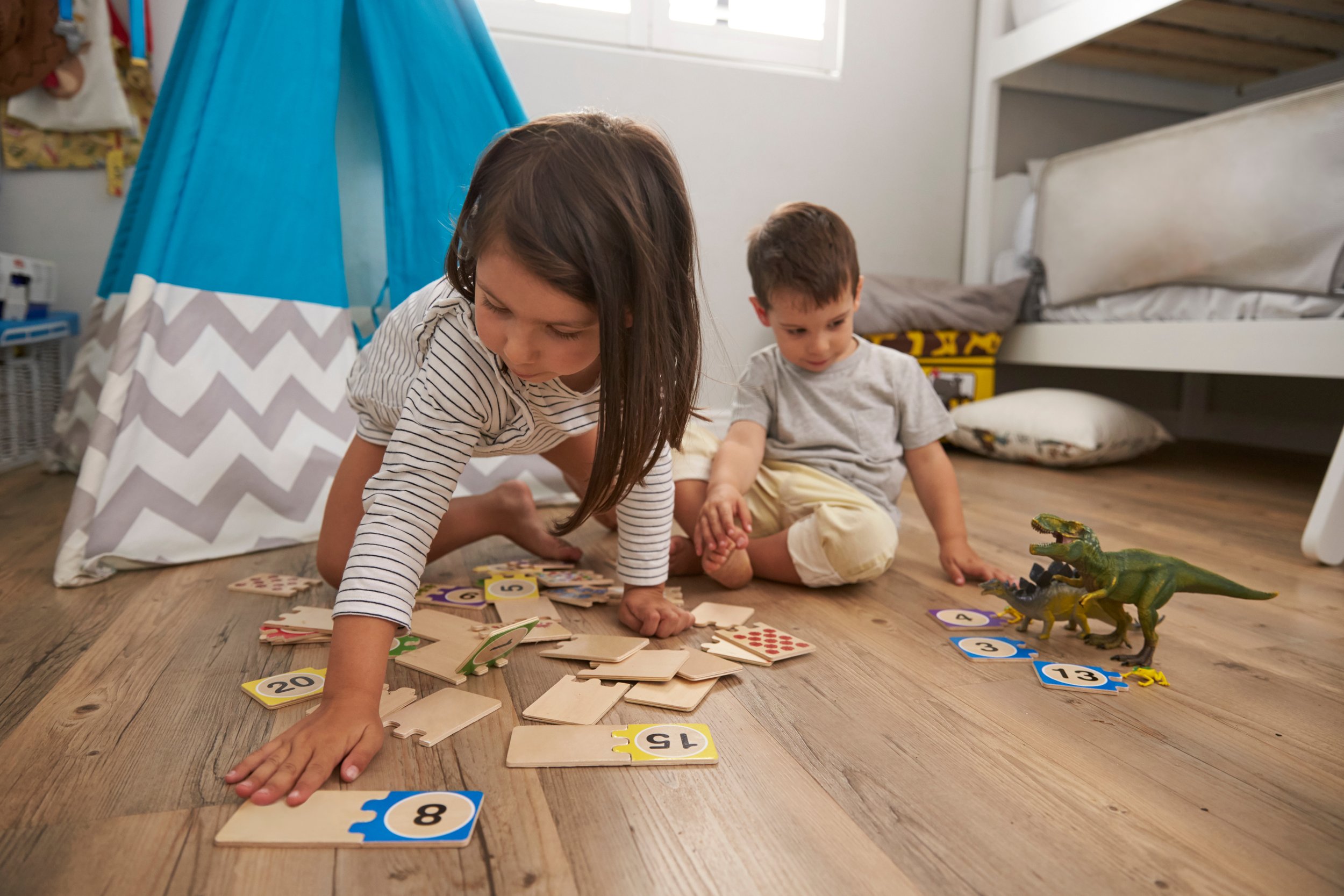Phonological Processes: Common and expected “mistakes” in toddler speech
When children try to produce words that are more complex than their speech system can handle, they naturally simplify the word in order to be successful. To us, these sound like errors in speech but this is actually an expected developmental process where children use what we call phonological processes to simplify words into simpler word shapes.
For example, even children who talk early can't usually handle saying longer words like umbrella, applesauce or grandma. So if they learn these words and try to say them, you may end up with “umma” for umbrella, “apps” for applesauce, or “bama” for grandma. Their speech systems are naturally helping them find a way to use these complex words even if they come out a little funny right now.
Most children grow out of using these phonological processes on their own as they get older.
In this post we’ll be talking about:
how toddler’s combine consonant and vowel sounds to say words
common phonological processes or speech “shortcuts” and when they typically go away
how to know if your child’s speech errors are typical and how to know if it’s time to see a speech therapist
Toddler speech development - beyond the sounds
When we look at a child's speech production, many parents often notice what specific sounds their child can or can't make. If your child hasn’t learned to pronounce certain sounds, it makes it harder to understand them.
In speech therapy, we refer to how easy or hard it is to understand someone as speech intelligibility.
But speech intelligibility is not just about the sounds children can pronounce! Looking at word shape, or how kids put sounds together, can be equally as important and illuminating when it comes to understanding how your child produces speech.
Phonological Patterns
Word shape refers to how a specific word is made up of consonants and vowels and in what order and pattern. In speech, these are called phonological patterns or patterns in which consonants and vowels come together to make a word.
For example, the word mat and the word dog both have the word shape: consonant - vowel - consonant. Even though the words don't share any letters they follow the same phonological pattern. And there are tons of other early words that follow the same consonant vowel consonant word shape. Here’s 10 examples: Mom, Dad, pop, cat, dog, pig, food, wash, feet, and bed
Phonological Processes
As toddlers are learning how to combine sounds using different phonological patterns, they make some “mistakes” or “shortcuts” to simplify the pronunciation of words as their speech system is still developing. It’s a completely typical part of development. Speech therapists refer to these toddler speech “mistakes” as phonological processes.
Here’s a quick video that describes phonological processes:
Phonological Processes Chart
These processes typically resolve by age 3
| Phonological Process | Description | Example |
|---|---|---|
| Final Consonant Deletion | The final consonant of a word is left off | Saying "bo" for boat & "ca" for cat |
| Stopping | Producing sounds that stop airflow (P B T D K G) instead of sounds that are made to continue airflow (S F) | Saying "tee" for see & "pour" for four |
| Assimiliation | When one consonant sound becomes the same as a different consonant sound in the word; using the same consonant twice | Saying "mime" for mine & "bahble" for bottle |
These processes typically resolve by age 4
| Phonological Process | Description | Example |
|---|---|---|
| Stopping | Producing sounds that stop airflow (P B T D K G) instead of sounds that are made to continue airflow (Z, V) | Saying "doo" for zoo & "bery" for very |
| Fronting | Producing sounds in the front of the mouth instead of the back of the mouth. This is most commonly making a T instead of K sound, and D instead of G sound | Saying "tup" for cup & "doe" for go |
| Syllable Deletion | When 1 or more syllables from the word are left out | Saying "ephant" for elephant & "ba-ball" for basketball |
| Consonant cluster reduction | When 2 consonants together are simplified to only 1 consonant | Saying "tar" for star & "boo" for "blue" |
| Deaffrication | When SH replaces CH or ZH replaces J | Saying "ship" for chip & "zhuice" for juice |
These processes typically persist beyond age 4
| Phonological Processes | Description | Example |
|---|---|---|
| Gliding | Using simpler sounds for R and L, most commonly seen as W for R, and W or Y for L | Saying "wed" for "red" or "yike" for "like" |
Reference: American Speech Language Hearing Association (ASHA)
This is not a comprehensive list of phonological processes, just the most common ways that kids simplify words as their mouth and speech system continue to develop.
What to do if your child uses one or more phonological process
Before we dive deeper into phonology, I want you to know that practicing phonological skills at home is more complex and challenging than working on articulation. I'll give you some tips to help you develop your child's skills but if they're having serious difficulty, I definitely recommend seeking help from a trained speech therapist.
This video will help explain the steps to getting help with speech. And below we’ll talk about some things you can do at home.
With that being said, here are 3 things you can do at home if your little one is using phonological processes:
#1 Get face to face with your toddler so they can easily see your mouth.
This strategy is super simple, and also super powerful because toddlers learn through imitation. When your child can easily see your mouth, they will be more likely to try to copy what you’re saying.
We think face-to-face is so important that we actually have a whole entire lesson about it - which you can read here.
#2 Model the full pronunciation of words.
Phonological processes are a typical part of speech development in toddlers, and correcting toddlers by telling them what they didn’t do or what they need to do next time can be discouraging.
It’s a more powerful learning strategy to simply repeat back words that they’ve said with the full pronunciation. So if your toddler says, “My ca!” you can say back, “Yes, that’s your car.”
In speech therapy we refer to this strategy as recasting. Recasting is the best way to help young children learn more advanced phonological patterns at home.
And it’s important to know that recasting isn’t likely to teach your toddler new pronunciation skills overnight; this is a strategy focused towards long term success in developing more advanced pronunciation skills.
#3 Find support from your pediatrician, an audiologist, and/or a speech therapist.
If you have concerns about your child’s phonological development, or your gut is telling you something is off, we always recommend that your talk to your child’s pediatrician about a speech and language evaluation. A speech therapist’s trained ear will be able to pick up on the phonological processes your child is using and create a customized step by step to supporting their speech development.
I know this isn’t something to do at home right away, but a speech therapist will help you identify the best homework activities to use for the long run.
Here’s my guide to finding a speech therapist near you, you’ll see I talk about how to find a speech therapist through your insurance (doctor’s referral most likely needed) and also through state funded programs (no doctor’s referral needed).
You’ll also want to ask for a hearing assessment for your toddler. And when I talk to family’s about hearing tests they usually assure me they aren’t worried about their child’s hearing. BUT sometimes toddler’s can have undetected ear infections or minimal hearing losses that make it harder for them to learn speech. A hearing assessment with an audiologist is the gold standard before starting speech therapy. Here’s a link to download an amazing guide from audiologist Dr. Michelle Hu to help you prepare for your child’s first hearing evaluations.
Woah, that’s a lot of talk about toddler speech!
Let’s quickly review what we’ve learned.
Phonology, or how we put sounds together to say words, is just another lens through which we can track your child's speech development by determining which word shapes and patterns they've mastered and which they still need to work on.
Phonological processes are expected “errors” in toddler speech that happen when toddlers try to pronounce word shapes that are too advanced for them right now.
You can support your child in using more complex phonological patterns at home, but if you have concerns it is recommend you talk to a speech therapist for specific and individualized support.
Other FAQ about phonological processes:
-
Phonological processes may sound like speech errors, but they are actually speech patterns children use to simplify words that are hard to pronounce as they are learning to talk.
-
A lisp is an articulation error, not a phonological disorder.
-
Speech therapists break phonological processes into 3 overarching types: syllable structure, substitution, and assimilation.
Syllable structure phonological processes happen when the number of syllables used is different from the correct pronunciation (one syllable or more is left out).
Substitution phonological processes are characterized by one class of sounds replacing another class of sounds.
Assimilation phonological processes happen when the consonant sounds in a word become more alike.
Written By:
Stephanie Keffer, MS CCC-SLP
Stephanie Burgener-Vader MA CCC-SLP
© 2020-2025. Stephanie Keffer Hatleli, MS CCC-SLP. All Rights Reserved.
The content offered on ToddlerTalk.com is for informational purposes only. Toddler Talk is not engaged in rendering professional advice, whether medical or otherwise, to individual users or their children or families. No content on this site, regardless of date, should ever be used as a substitute for direct medical advice from your doctor, speech language pathologist, or other health professional. By accessing the content on ToddlerTalk.com, you acknowledge and agree that you are accepting the responsibility for your child’s health and well-being. In return for providing you with information related to home speech and language practice, you waive any claims that you or your child may have as a result of utilizing the content on ToddlerTalk.com.





